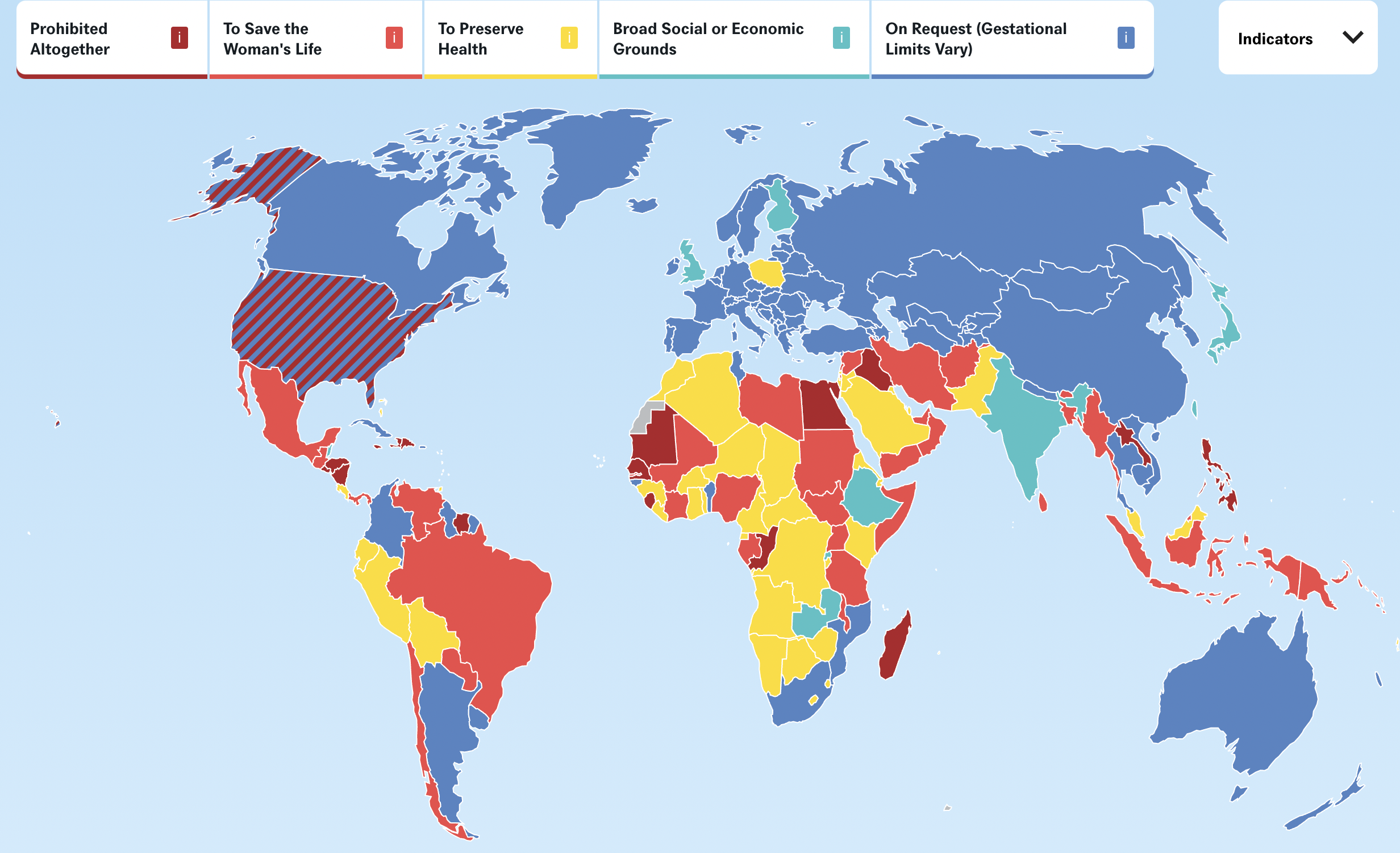GLOBAL ABORTION FACTS AT A GLANCE
Abstracted from Guttmacher Institute’s Induced Abortion Worldwide 2022 Fact Sheet
GLOBAL ABORTION DATA
- Approximately 1 in 4 pregnancies globally end in abortion (Sedgh 2016).
- Unintended pregancy and abortion care occur across all countries’ income groups.
- Legal restrictions do not decrease abortion rates, but make abortions much less safe.
- Many patients are denied abortion even where legal (ANSIRH Turnaway Study).
CONTRACEPTIVE USE
- Globally, about half of all women want to avoid a pregnancy; of these, about 75% are using modern contraceptives.
- A greater proportion of people in non-industrialized countries have an unmet need for contraception, accounting for 84% of unintended pregnancies in those regions.
- Reducing the unmet need for modern contraception globally can decrease rates of maternal and infant mortality (Guttmacher 2017).
SAFETY OF ABORTION
- Abortions are safer where laws are less restrictive and also in countries with higher gross national incomes (Singh 2018).
- Stigma is a recognized contributor to maternal morbidity and mortality from unsafe abortion, even where abortion is legal.
- Between 4.7–13.2% of pregnancy related deaths worldwide are from unsafe abortion, and this is likely an underestimate (WHO 2021).
WORLD’S ABORTION LAWS
- In 1994, 179 countries signaled their commitment to prevent unsafe abortions and reduce pregnancy-related mortality by signing the first international consensus document recognizing reproductive rights as human rights (CRR ICPD 2020).
- The last 25 years have seen an overwhelming global trend toward the liberalization of abortion laws, with nearly 50 countries worldwide enacting laws expanding legality.
- Abortion laws vary widely. Laws by country are on the map below from June 2022 at the courtesy of the Center for Reproductive Rights, where interactive versions are available.
- Many global efforts focus on providing accessible, affordable, and high-quality reproductive health care in ways that recognize autonomy.
